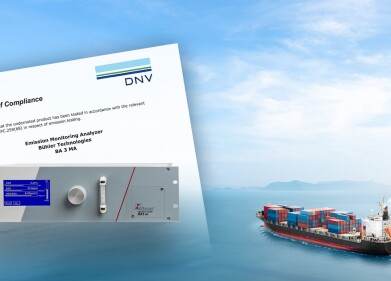Measurement and testing
What is Ammonia?
Jun 27 2021
Also known as NH3, ammonia is a colourless gas that’s both naturally occurring and artificially produced by manufacturing plants around the world. Made up of a single nitrogen atom bonded to three hydrogen atoms, the stable binary hydride has a distinct smell that’s often compared to sweat and urine.
Ammonia applications
The United States operates more than 2000 ammonia plants, with the majority of domestic produce used to manufacture agricultural fertilisers. As US and global populations grow, demand for fertiliser, and the ammonia needed to manufacture the product, is continually on the rise.
The oil and gas industry is another big consumer of commercially manufactured ammonia, with the gas used to neutralise acidic compounds during the oil refining process. Ammonia can also be added to reactors to detoxify emissions and convert nitrogen oxides into N and H2O. Many commercial refrigeration systems rely on ammonia, with the compound also used to manufacture plastics, textiles, industrial chemicals and pharmaceuticals.
Ammonia as an alternative fuel
Over the past decade, scientists have been exploring the use of ammonia as an alternative fuel. The lack of carbon atoms means gas and water are the only combustion by-products of NH3, making it an exciting eco-friendly alternative to conventional fuels. Green ammonia, a product made with hydrogen derived from sustainable water electrolysis energy, has been hailed as the “fuel of the future” by industry giants like Tony Will, CEO of US-based fertiliser manufacturer CF Industries.
“Up to this point, we have made a business by selling the nitrogen value of the molecule,” says Will. “What’s really exciting about this is now there is an opportunity and a market that values the hydrogen portion of the molecule.”
Managing the risks of ammonia
While ammonia can be extremely useful across a wide range of sectors and industries, it’s also a highly toxic substance. At high concentrations, ammonia can cause severe burns and respiratory issues. In extreme cases, inhaling ammonia can result in death. Ammonia is also a serious environmental threat, with the potential to pollute air, acidify soil, and damage foliage. For these reasons, ammonia monitoring is a fundamental part of responsible NH3 use.
In addition to independent ammonia monitoring measures, government bodies like the Department for Environment, Food & Rural Affairs actively monitor gaseous ammonia at dozens of sites across the UK. In the United States, the Ammonia Monitoring Network (AMoN) tracks concentrations and maps trends across the country.
Want to know more about how science is used to monitor ammonia? Find out more about the next-generation techniques being used to track NH3 concentrations, including laser-based analysers, in ‘New perspectives in ammonia monitoring.
Digital Edition
PIN 26.1 Feb/Mar 2025
March 2025
Analytical Instrumentation - Elemental Analysis for Quality and Process Control at Refineries, for Lubricants and Wear Metals in Engine Oils - Synthetic Lubricants: New Developments - Scaling...
View all digital editions
Events
Apr 08 2025 Birmingham, UK
Apr 08 2025 Kielce, Poland
Apr 08 2025 Ravenna, Italy
Apr 08 2025 Southampton, UK
Apr 08 2025 London, UK



















